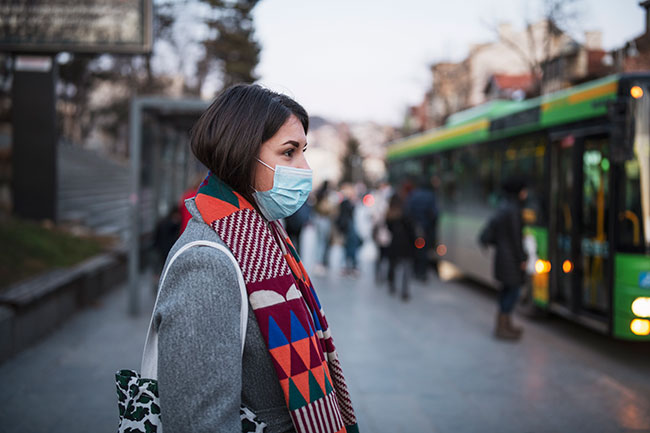
Features
Back of the Book
Policing and COVID-19: The balance between risk and service
March 25, 2020 By Rylan Simpson, Ph.D.
 Photo: Getty Images
Photo: Getty Images Over the past few weeks, COVID-19 has taken the world by storm. The World Health Organization declared the virus to be a pandemic, the federal government of Canada closed the nation’s borders, the provincial government of British Columbia declared a state of emergency, and local communities have been told to stay home and practice social distancing. These changes have induced fear, panic, and anxiety among people from coast to coast and brought pressing social issues to the forefront of public discussion.
The implications of the virus for public health officials, including doctors, nurses and associated medical staff, have been made publicly clear by both the citizenry and the polity.
The implications of the virus for public safety officials, however, remain much more muddied. Questions regarding the effects of the virus on police response and response times, the ability for police to maintain staffing levels, and the capability of police to engage in community initiatives continue to strike much debate.
In times of crisis, communities require the support of frontline personnel in order to help preserve life and protect property. Police, whether intentional or not, lie squarely at the epicentre of such communities. On any given day, the police are responsible for responding to calls for service, proactively patrolling their beats, and managing public order. Although these tasks are always important in contemporary policing, they become particularly important during times like now, when homes are more densely crowded, businesses are largely vacant, and essential resources are perceived as being both scarce and in high demand.
As COVID-19 intensifies, police agencies must therefore identify ways in which they can balance the risk of the virus with the necessity to provide quality service.
From an operational perspective, it means that police may do more policing via telephone than attendance. In the event of face-to-face contact, it means that police may inquire more about a person’s health in order to medically prepare for their contact with such person and prevent the transmission of the virus. And in the case of government orders to restrict mobility among our communities, it means that police may be tasked with enforcing rules that they have historically not been asked to enforce.
As with most organizations, responding to and managing these kinds of crises takes time and sometimes even growing pains, and the police are no exception. However, when police leaders make decisions using the best available evidence, police officers act based upon informed recommendations, and citizens comply with requests from police, society as a collective unit wins.
An ill police agency is a non-existent police agency. Society must work as a team to prevent the spread of the virus among both its populace and its emergency and essential service personnel who are working feverishly to reduce the impact of COVID-19. The costs of not working as a team are too great to not follow such directions.
How the police act now will undoubtedly set important precedents for how large-scale public health and public safety incidents will be handled moving forward.
Stay safe; and stay healthy.
Rylan Simpson, Ph.D. is an assistant professor in the School of Criminology at Simon Fraser University. His research interests include policing, perceptions of police, police organizations, legitimacy, experimental criminology, theories of crime, and social psychology. He has recently published his work in the Journal of Experimental Criminology, Policing and Society, and Policing: A Journal of Policy and Practice.
Print this page